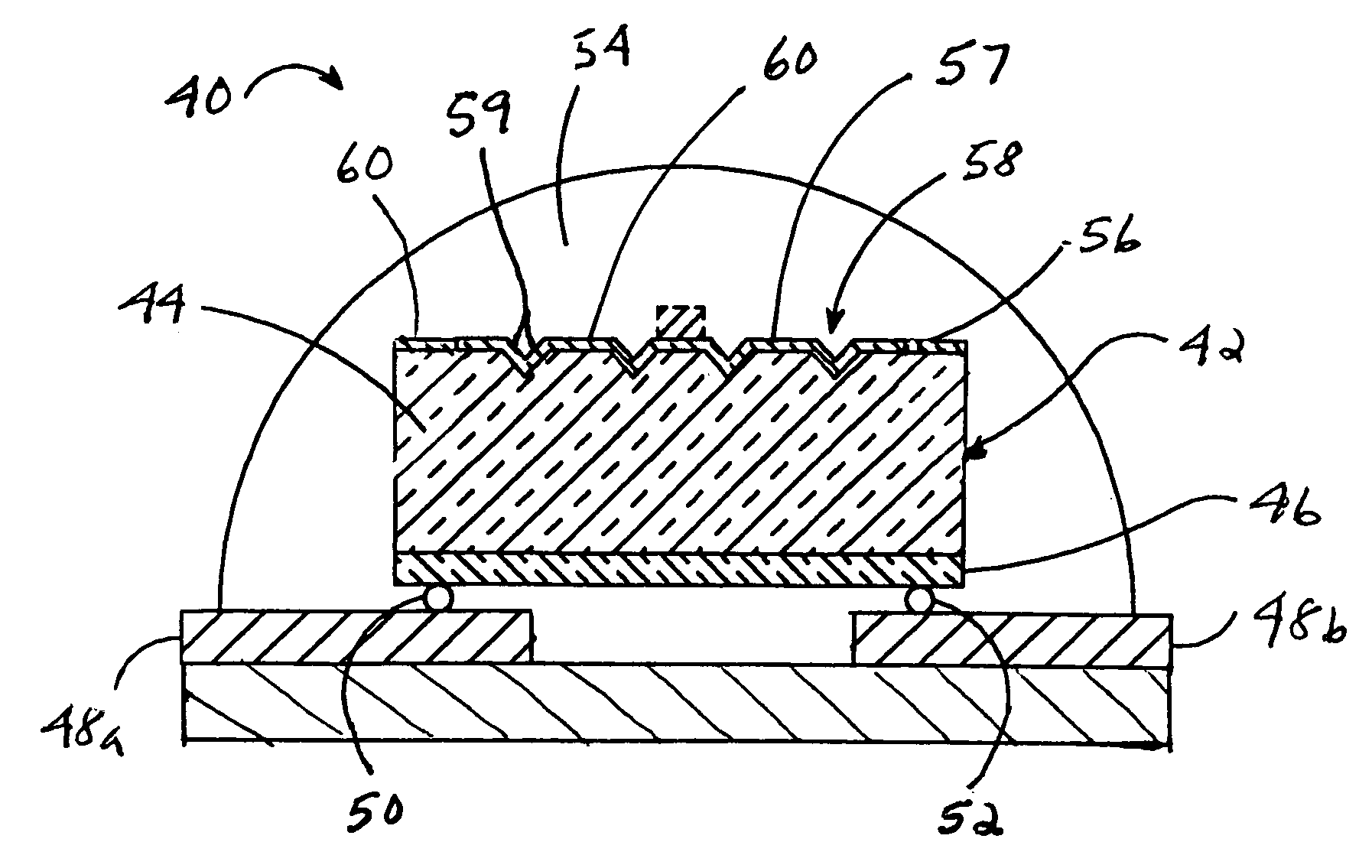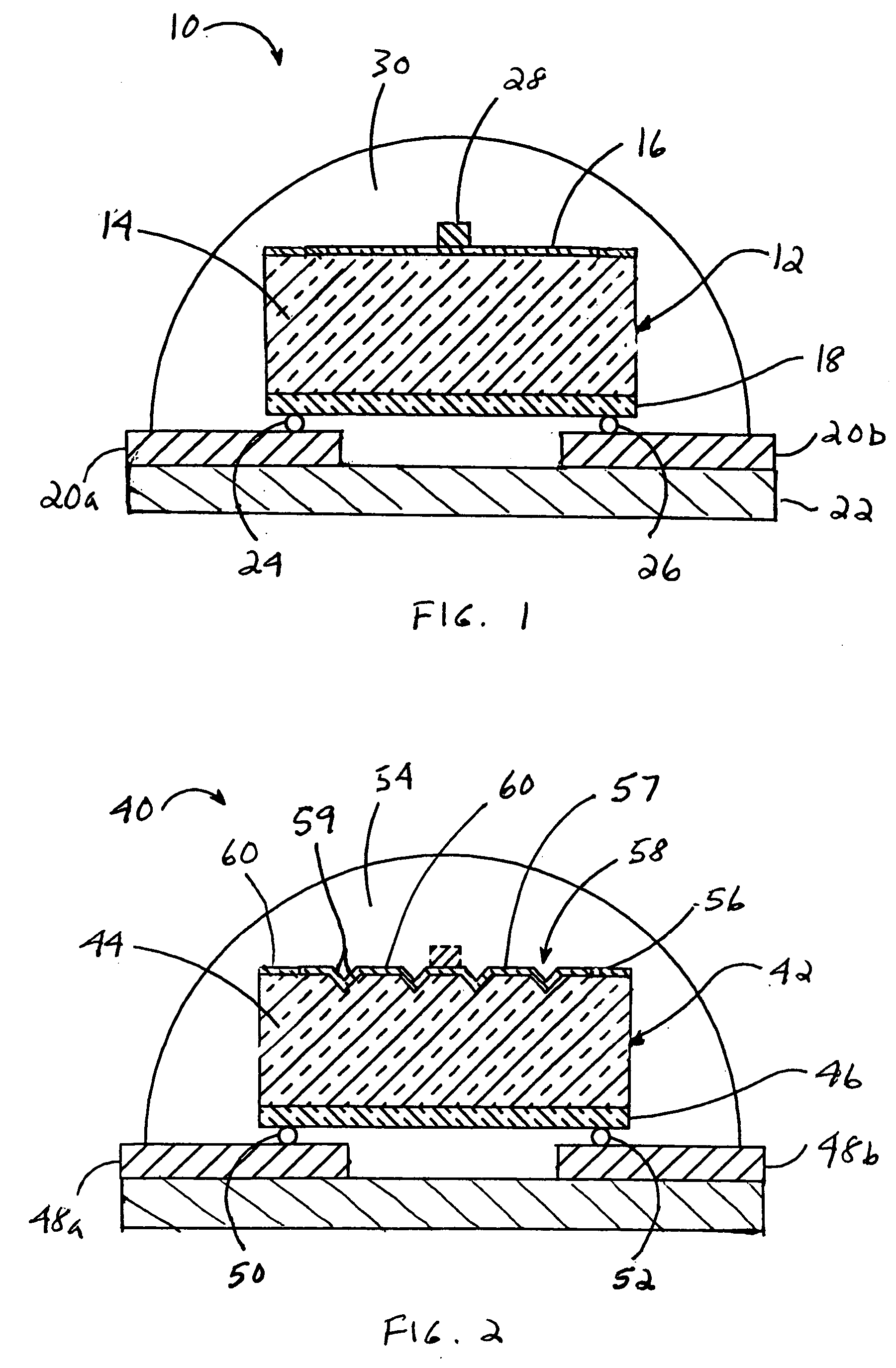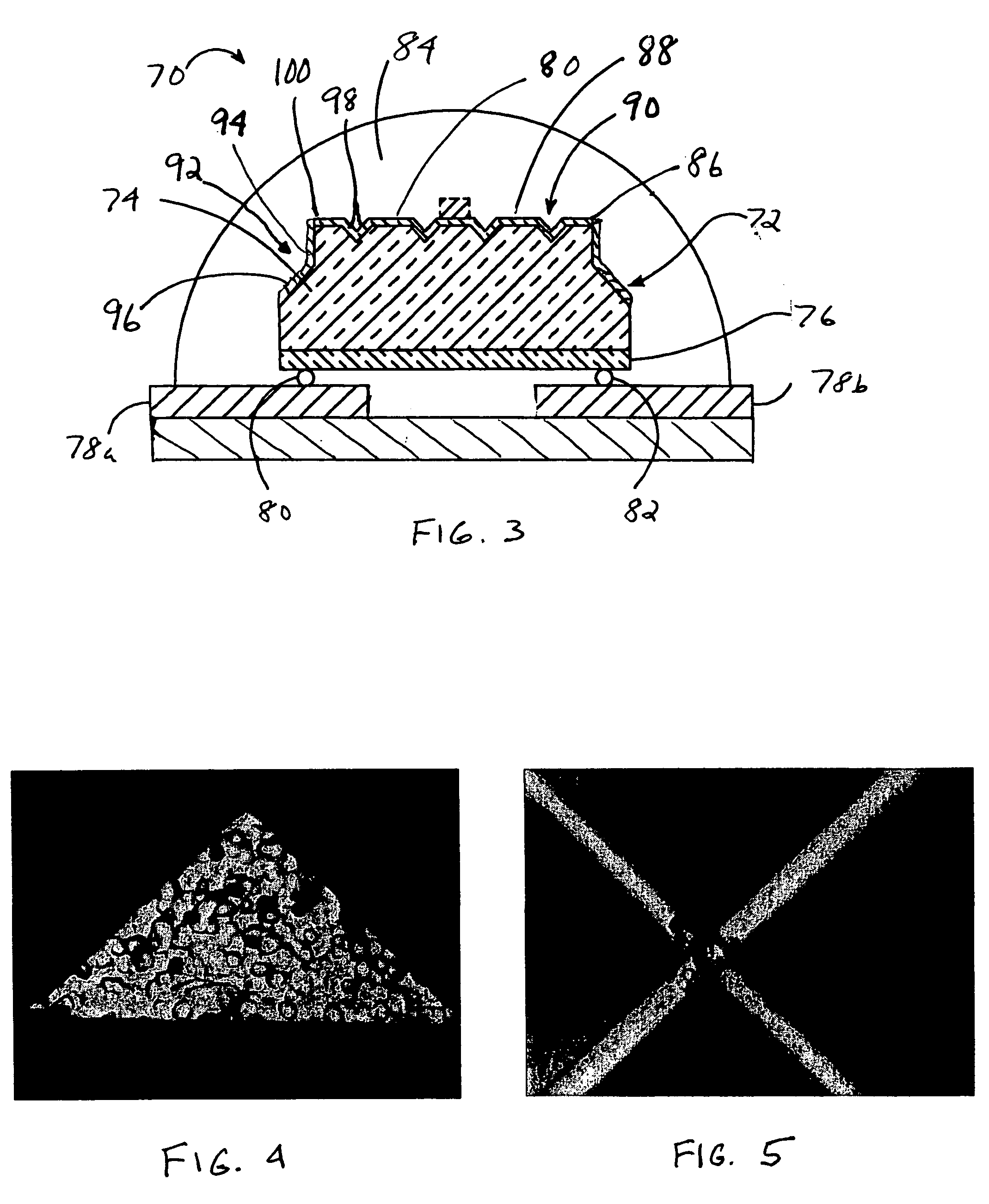LED with substrate modifications for enhanced light extraction and method of making same
- Summary
- Abstract
- Description
- Claims
- Application Information
AI Technical Summary
Benefits of technology
Problems solved by technology
Method used
Image
Examples
Embodiment Construction
[0039] The present invention provides improved light extraction for light emitting diodes (LEDs) through the addition of a particular type of surface morphology to the back surface of the LED substrate. The surface morphology is created in the substrate through one or more additional steps in the LED fabrication process.
[0040] In one embodiment the back surface morphology of a SiC substrate is modified using a reactive ion etch (RIE) process and more particularly an inductively coupled plasma reactive ion etch (ICP-RIE) process. This process creates one or more surface areas characterized by a dimpled texture on a microscopic scale. The dimpled surface provides a varying surface that allows light that would otherwise be trapped in the LED, by total internal reflection (TIR), to escape from the substrate to contribute to light emission. The variations in the surface increase the chances that the TIR light will reach the substrate surface within the critical angle and will be emitted...
PUM
 Login to View More
Login to View More Abstract
Description
Claims
Application Information
 Login to View More
Login to View More - R&D
- Intellectual Property
- Life Sciences
- Materials
- Tech Scout
- Unparalleled Data Quality
- Higher Quality Content
- 60% Fewer Hallucinations
Browse by: Latest US Patents, China's latest patents, Technical Efficacy Thesaurus, Application Domain, Technology Topic, Popular Technical Reports.
© 2025 PatSnap. All rights reserved.Legal|Privacy policy|Modern Slavery Act Transparency Statement|Sitemap|About US| Contact US: help@patsnap.com



